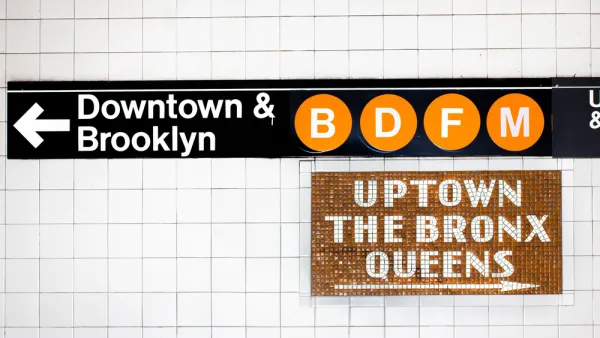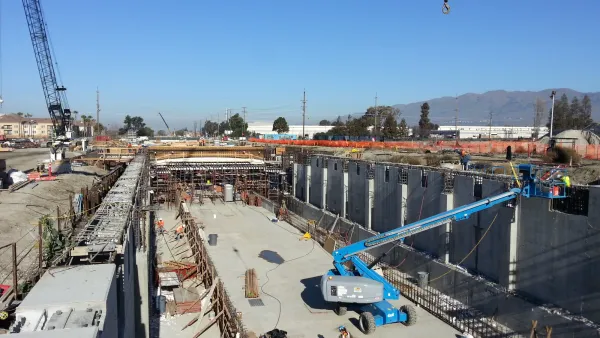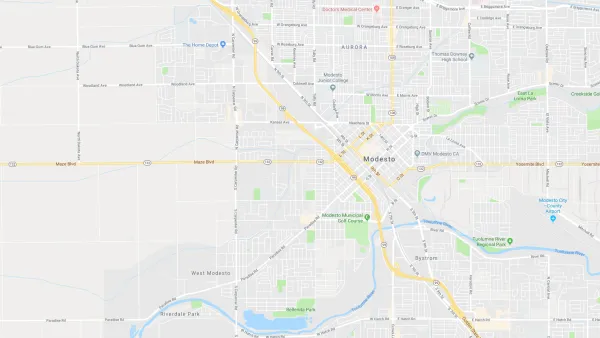According to a scathing critique of the most recent round of TIGER funding, many of the awarded projects fall far below the quality that transit advocates expect.
Jacob Anbinder pens a critique of the TIGER grant program, which announced its most recent round of grant funding at the end of October.
Anbinder clearly supports the spirit of the program, and notes some of its most obvious benefits: "The result is greater transparency for taxpayers, and, because TIGER is not dependent on the Highway Trust Fund, it is immune from the constant threat of insolvency that plagues much of federal transportation funding (though not from Republican attempts to kill the program altogether). Since 2009, it has issued 381 grants averaging about $12 million."
The rub, according to Anbinder: "With this year’s grants, however, it is now clearer than ever that when it comes to investment in mass transit, TIGER is not the savior that many would like to think." In fact, adds Anbinder, "at a time when the country’s mobility needs are severe… the mediocrity of this year’s TIGER transit grantees highlights how sorely a new approach is needed."
The article proceeds to critique the quality of some of this year's winning grants, including, for example, $10 million to a ferry terminal in New Orleans that serves far fewer people that the city's bus system, $9 million for a "travel plaza (Anibinder says it should be considered a "fancy gas station") in Rhode Island, and $18 million to reopen a portion of Main Street in downtown Buffalo to car traffic. Placing cars on a section of street currently served by pedestrians and light rail will, according to the U.S. Department of Transportation, "revitalize the downtown area."
Anbinder notes that many of the projects are seemingly much more in line with the promise of TIGER funding, though even some of the more worthy projects have fatal flaws. As an example of that flaw, Anbinder describes the $20 million grant for a new bus rapid transit line in Birmingham, Alabama. The concern there is a lack of any guarantee that the Birmingham-Jefferson County Transit Authority will actually create a BRT system that works:
"For starters, the Birmingham-Jefferson County Transit Authority currently has only 14 vehicles in reserve for use at peak service, according to information from the National Transit Database—and not all of these are necessarily buses. While the grant announcement says the TIGER money will partly pay for additional buses, a spokesperson for the BJCTA told me that the City of Birmingham (which is the official grant recipient) has yet to decide how much money it will share with the agency for these purposes."
The shortcomings of these awarded projects, according to the argument of the article, "point to a larger problem with the way the federal government funds public transportation." Anbinder suggests, in a lot more detail, that more federal transit funding should go to operations, rather than just capital investments, and that investments should focus more on frequency.
FULL STORY: Our Failed Federal Transit Policy

Analysis: Cybertruck Fatality Rate Far Exceeds That of Ford Pinto
The Tesla Cybertruck was recalled seven times last year.

National Parks Layoffs Will Cause Communities to Lose Billions
Thousands of essential park workers were laid off this week, just before the busy spring break season.

Retro-silient?: America’s First “Eco-burb,” The Woodlands Turns 50
A master-planned community north of Houston offers lessons on green infrastructure and resilient design, but falls short of its founder’s lofty affordability and walkability goals.

Test News Post 1
This is a summary

Analysis: Cybertruck Fatality Rate Far Exceeds That of Ford Pinto
The Tesla Cybertruck was recalled seven times last year.

Test News Headline 46
Test for the image on the front page.
Urban Design for Planners 1: Software Tools
This six-course series explores essential urban design concepts using open source software and equips planners with the tools they need to participate fully in the urban design process.
Planning for Universal Design
Learn the tools for implementing Universal Design in planning regulations.
EMC Planning Group, Inc.
Planetizen
Planetizen
Mpact (formerly Rail~Volution)
Great Falls Development Authority, Inc.
HUDs Office of Policy Development and Research
NYU Wagner Graduate School of Public Service




























